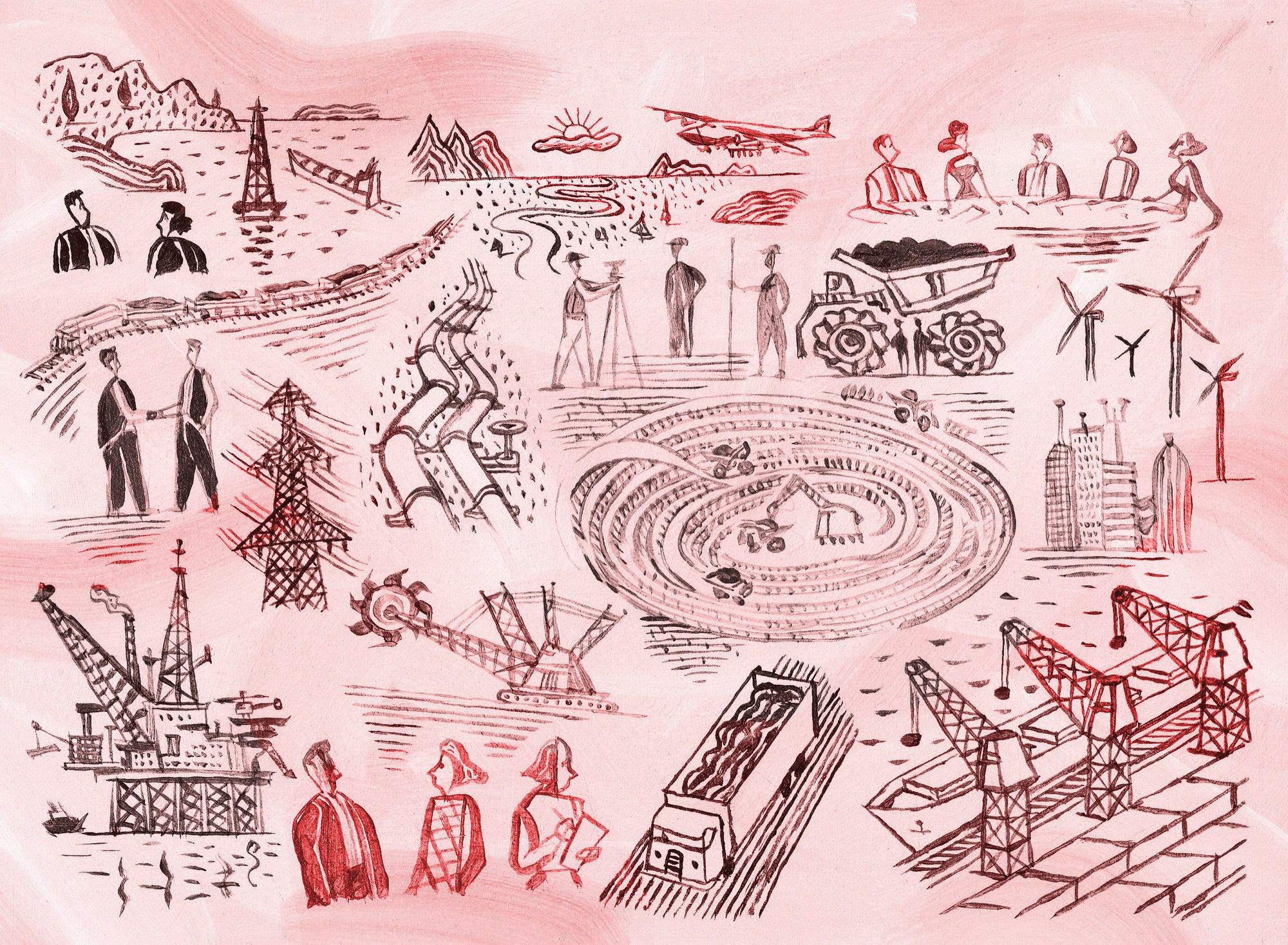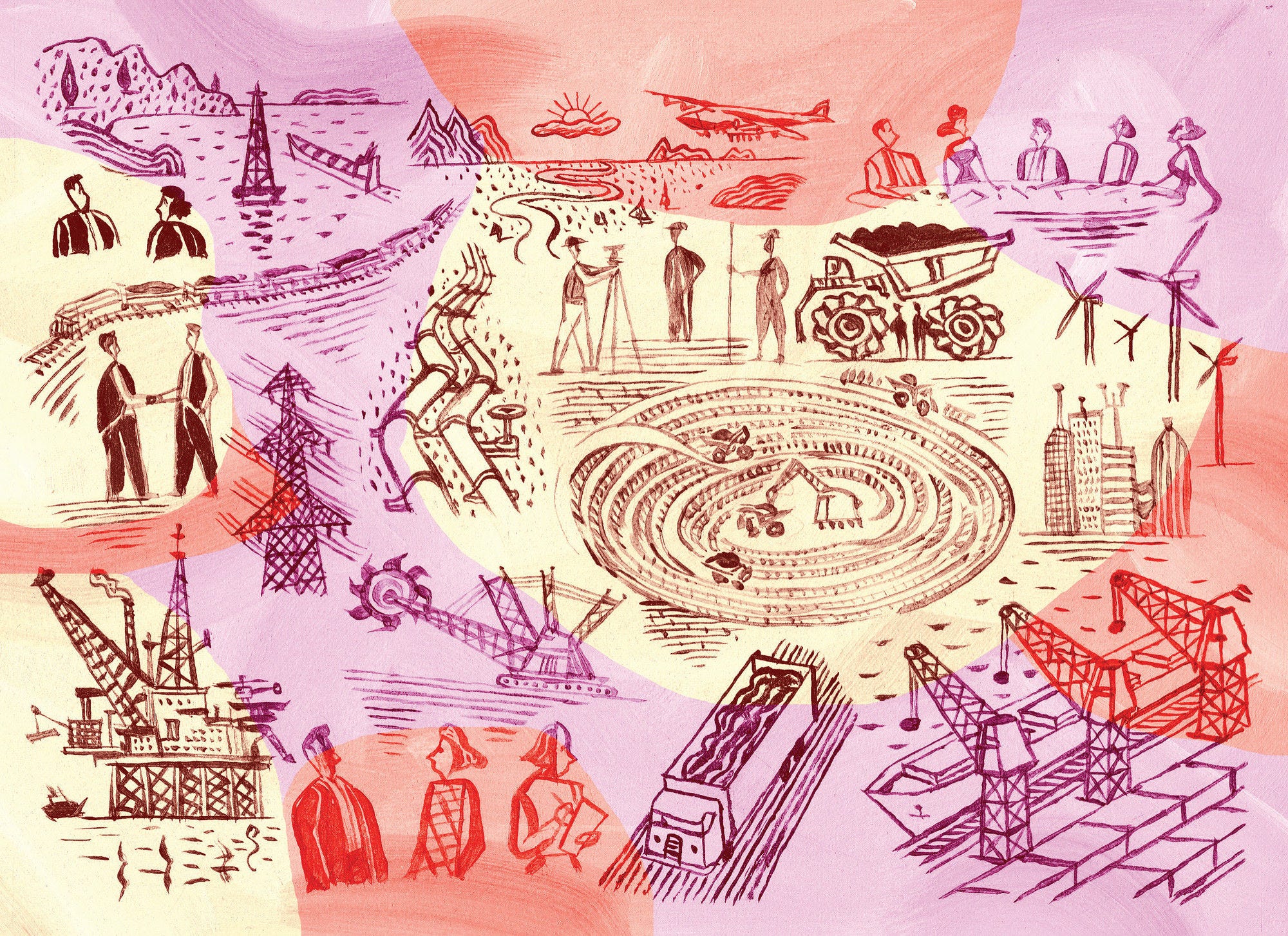Rural regions in Colombia have untapped potential to boost wealth and well-being in the country. Despite remarkable economic growth over the last two decades, Colombia’s development policy needs to increase its focus on rurality, as regional inequalities remain high by OECD standards and structural challenges still prevent greater development in rural places. This report assesses trends, challenges and opportunities of rural Colombia and examines the country’s rural development policy. It offers recommendations to mobilise rural assets and improve rural well-being with a focus on: strengthening multi-government coordination and policy implementation; enhancing transport and broadband connectivity as well as accessibility to quality education and health and; improving land use management in rural Colombia.
Rural Policy Review of Colombia 2022

Abstract
Executive Summary
Assessment
Colombia experienced remarkable economic growth over the last two decades, almost doubling the size of its economy and growing nearly three times faster than the OECD average between 2000 and 2021. This growth helped Colombia record the sixth-highest reduction in regional inequalities in gross domestic product (GDP) per capita among OECD countries between 2008 and 2020. However, despite this progress, regional income inequalities remain the highest across OECD countries in 2020, with rural areas recording the highest monetary and multidimensional poverty rates.
Colombian rural areas are undergoing profound transformations. Agriculture is gradually reducing its weight in the national and rural economy. Despite still employing most rural workers (62%), the sector’s share of national GDP declined by more than half over the past decades, from 14% in 1995 to 6% in 2020. Rural communities are also facing the increasing impacts of climate change (floods and long dry seasons) as well as challenges to adapt to the digital transition.
Against this backdrop, rural policies have also evolved over the past years. New planning instruments were developed to align national plans to local interests (e.g. Territorial Pacts and Development Programs with a Territorial Approach) and the ongoing Integral Rural Reform (IRR) of the 2016 peace agreement has provided building blocks for a place-based approach to rural development, but still needs further advancement in its implementation.
Despite these improvements, Colombia’s rural policy framework still applies a narrow vision to rural development, mainly focused on primary activities, social assistance and security, as a legacy of an urban-centred development policy. The rural policy approach is mainly sectoral, characterised by low levels of coordination among ministries that develop rural policies, fragmented implementation of rural strategies at the local level, and national policies that still associate rural with agricultural development.
Rural regions in Colombia have significant untapped opportunities for sustainable and inclusive growth. Their population is on average younger than the OECD and contains one of the most diverse ethnic mixes in South America. Colombia is the second most biodiverse country in the world and the sixth in terms of volume of freshwater. Its rural regions also provide fertile land, a variety of minerals and strong potential for wind and solar energy. The country’s polycentric territorial structure and local value chains of both traditional sectors and emerging ones (eco/ethno tourism or bio and renewable energy) can leverage these assets and provide new income sources for rural communities.
However, several historical structural challenges have undermined development and well-being standards in rural Colombia. These challenges include high rates of informal land tenure and land concentration, unfinished land restitution processes, violence in rural communities, poor transport infrastructure and low access to quality broadband, healthcare and education. The lack of rural information (e.g. untitled public lands or tertiary roads) coupled with low civil society participation in rural policy and weak capacity of local governments represent additional bottlenecks for effective policy responses and implementation.
Addressing the cross-cutting challenges and mobilising the variety of assets in rural regions will require a broader rural policy framework with better inter-ministerial co‑ordination to harmonise sectoral policies, that can prioritise the main rural needs and better involve local actors in policy implementation. The country already has elements in place for this comprehensive approach, including the national sectoral plans set by the IRR and specific national policies to diversify the rural economy (e.g. sustainable tourism and energy transition) and support agriculture competitiveness (National Agricultural Innovation System). The government has also established strategies to address pressing rural challenges, including the development of a land use information system (the Multipurpose Cadastre, Catastro Multipropósito), the modernisation of the land restitution process and the elaboration of a national multimodal transport plan.
To attain greater well-being for rural communities and equal development opportunities across the country, the review identifies 15 recommendations structured around 3 key pillars: i) creating a long-term and comprehensive national rural policy focused on people’s well-being, that harmonises the IRR with sectoral economic policies; ii) prioritising actions on key bottlenecks for rural development, with better alignment of national policies to rural characteristics and greater financial and human capacity to ongoing initiatives; and iii) improving the design and implementation of rural policy, supported by an inter-ministerial coordination body for rural policy and greater involvement of rural communities in policy implementation (see table below).
Key recommendations of the Rural Policy Review of Colombia
|
Recommendation |
Who |
|
|---|---|---|
|
Developing a comprehensive national rural policy that focuses on raising people’s well-being |
||
|
1. |
Ensure policies across all levels of government make use of a consistent rural definition that recognises the diversity of rural areas and acknowledges urban-rural linkages |
National Department of Planning of Colombia (DNP) and National Department of Statistics of Colombia (DANE) |
|
2. |
Establish an integrated rural information system by accelerating the rural information projects that are underway |
DNP, DANE and Ministry of Agriculture and Rural Development of Colombia (MADR) with the co‑operation of other ministries |
|
3. |
Create a comprehensive national rural policy that focuses on the well-being of people and takes a cross-sectoral approach to rural development. This policy should harmonise the Integral Rural Reform (IRR) with other productive and transversal policies for rural development |
Presidency, DNP, MADR and the national body co‑ordinating rural policy |
|
Prioritising key bottlenecks for rural development to mobilise the rural potential |
||
|
4. |
Strengthen the implementation of transport projects for rural communities by prioritising the connection of rural regions to the primary network and multimodal transport solutions, and increasing co-financing and partnership models for tertiary roads |
Ministry of Transport with the support of DNP and sub-regional governments |
|
5. |
Ensure the provision of high-quality broadband access in rural regions at affordable prices, by providing legal certainty, reducing the burden of administrative procedures and fees, increasing transparency, amplifying the impact of current policies, leveraging mobile services and further involving local actors. |
Ministry of Information Technologies and Communications of Colombia (MINTIC), Commission for Communications Regulation and regional governments |
|
6. |
Enhance access to education and health in rural communities by accelerating implementation of sectorial national plans with rural focus, reinforcing flexibility of national programmes, scaling up local initiatives and further supporting uptake of digital services and training for service professionals. |
Ministry of Education, National Learning Service (SENA), Ministry of Health and DNP |
|
7. |
Strengthen policies of land distribution, restitution and formalisation, by prioritising financial and human resources to solve information gaps related to land, facilitating conditions to register the land and improving co‑ordination efforts across spatial planning instruments to enabling the most adequate use of rural lands. |
Presidency, DNP, MADR and its agencies (e.g. National Land Agency-ANT), the National Geographic Institute (IGAC) and the body co‑ordinating rural policy |
|
8. |
Clarify the level of autonomy and land constitution to ethnic groups by augmenting transparency in the administrative process of land constitution and expansion, strengthening consensual decision-making in land claims and concluding the new national protocol on the right of prior consultation. |
Presidency, MADR and its agencies, Ministry of Interior |
|
9. |
Enhance law enforcement and involvement of local communities in land use management to fight deforestation and promote environmental restoration |
Presidency, Ministry of Interior, MADR and its agencies, and Ministry of Environment |
|
Improving the design and implementation of rural policy, supported by an inter-ministerial co‑ordination body |
||
|
10. |
Create or adapt an existent inter-ministerial co‑ordination body for rural policy with presidential mandate to lead and monitor the comprehensive national rural policy and harmonise it with the IRR. Chile and Finland’s inter-ministerial structure can be a guide for Colombia |
Presidency, DNP |
|
11. |
Promote bottom-up planning instruments to identify local priorities across all types of rural regions, extending and improving existing co‑ordination and planning instruments at the subnational level, including the articulation of Development Programs with a Territorial Approach (PDET) with other planning mechanisms |
Presidency, DNP and national body co‑ordinating rural policy |
|
12. |
Reduce the complexity of rural policy delivery and monitoring by creating a one-stop-shop at the regional level to harmonise the implementation of different policies for rural development |
Presidency, DNP, national body co‑ordinating rural policy |
|
13. |
Expand staff and financial capacity-building strategies for regional and municipal governments, with a differentiated approach |
DNP in co‑operation with subnational governments |
|
14. |
Enhance community capital to strengthen the involvement of civil society in rural policy and increase accountability and trust |
DNP in co‑operation with subnational governments and |
|
15. |
Promote the formation of urban-rural partnerships to attain cost-effective investments and economies of scale in local projects |
DNP, MADR and Ministry of Housing, City and Territory |
In the same series
Related publications
-
 21 November 2024
21 November 2024 -
 Policy paper19 November 2024
Policy paper19 November 2024 -
 16 September 2024
16 September 2024









